#design courses
Text
Exploring the Intersection of Graphic Design and UX/UI
In the ever-evolving landscape of digital design, the lines between graphic design and User Experience/User Interface (UX/UI) design are increasingly blurring. This intersection is creating a dynamic space where visual appeal meets functional design, leading to innovative solutions that enhance user experience. This article delves into this intriguing confluence, exploring how graphic design principles enrich UX/UI, the challenges and opportunities it presents, and future trends in this collaborative space.
The Synergy of Visual Aesthetics and User Experience
At the core of this intersection is the recognition that effective digital products are not just about looks or usability alone but a harmonious blend of both. Graphic design brings in elements like colour theory, typography, and imagery, which are crucial in creating an engaging user interface. These elements play a significant role in guiding a user's attention, conveying messages, and evoking emotions, thereby directly impacting the user experience.
UX/UI design, on the other hand, focuses on the functionality and usability of a product. It involves understanding user needs, creating intuitive navigation, and ensuring a seamless journey through the product. When combined with the aesthetic expertise of graphic design, it results in interfaces that are not only user-friendly but also visually compelling.
The Role of Graphic Design in Enhancing Usability
Graphic design contributes significantly to usability in UX/UI. For instance, the use of colour can highlight important features, direct user attention, and improve readability. Typography, when effectively used, ensures that the text is not just legible but also enhances the overall look of the interface. Similarly, the use of images and icons can make complex information more understandable and navigation more intuitive. Furthermore, graphic design principles can be applied to create a visual hierarchy, which is crucial in UX/UI design. By using size, colour, and contrast effectively, designers can guide users to the most important elements on a page, improving the efficiency of the user journey.
Challenges at the Intersection
While the integration of graphic design and UX/UI holds great potential, it also presents unique challenges. The primary challenge is maintaining a balance between aesthetic appeal and usability. There’s a risk of over-emphasizing visual elements at the expense of functionality or, conversely, focusing too much on usability while neglecting the visual impact. Another challenge is the need for designers to be skilled in both areas. Graphic designers venturing into UX/UI must understand user-centered design principles, while UX/UI designers need to develop an eye for aesthetics. This dual requirement can be demanding and necessitates continuous learning and adaptation.
Collaboration and Communication: Key to Successful Integration
Successful integration of graphic design and UX/UI hinges on effective collaboration and communication between designers. Teams must work closely, sharing insights and feedback throughout the design process. Graphic designers can provide valuable input on how visual elements can be used to enhance user experience, while UX/UI designers can guide the functional application of these elements.
Future Trends
Looking ahead, we can anticipate several trends at this intersection. One significant trend is the increasing use of motion graphics and animations. As technology advances, these elements will be more seamlessly integrated into interfaces, making interactions more engaging and informative. Another trend is the growing importance of accessibility and inclusive design. Graphic design can play a crucial role in making interfaces more accessible to a wider range of users, including those with disabilities. This includes the use of colour contrasts for better visibility, typography that ensures readability, and layouts that accommodate various assistive technologies.
Finally, with the rise of virtual and augmented reality, the role of graphic design in UX/UI is set to become even more prominent. Designers will need to create immersive and interactive experiences, which will require a deep understanding of both graphic design principles and user experience design.
In a Nutshell..
The intersection of graphic design and UX/UI is a fertile ground for innovation in the digital design landscape. By blending aesthetic principles with user-centered design, we can create digital products that are not only functional but also visually stunning. As we move forward, this synergy will continue to evolve, bringing new challenges and opportunities. Embracing this intersection is crucial for designers aiming to create impactful and user-friendly digital experiences.
4 notes
·
View notes
Text
The Creative Process: How Fashion Design Students Turn Ideas into Reality

Fashion design is an art form that requires creativity, skill, and patience. Fashion designers start with an idea and then turn that idea into a tangible design. For fashion design students, the process of turning an idea into a finished product is a crucial part of their education. In this blog, we'll explore the creative process of fashion design students and how they turn their ideas into reality.
Inspiration
The first step in the creative process is finding inspiration. Fashion design students draw inspiration from a variety of sources, such as art, nature, music, and culture. They also look to current trends and styles for inspiration. Once they have found an idea that speaks to them, they start to visualize the design in their minds.
Sketching
The next step is to sketch the design. Fashion design students use sketching as a way to get their ideas down on paper. They create rough sketches and refine them over time, adding details and making changes as they go. Sketching allows them to visualize the design and see how it might look in the real world.
Fabric Selection
Once the design is sketched out, fashion design students begin to select the fabric they will use. They consider the weight, texture, and drape of the fabric, as well as its color and pattern. They may also experiment with different combinations of fabrics to achieve the desired effect.
Pattern Making
After the fabric is selected, the fashion design student creates a pattern. This involves creating a template for the design, which will be used to cut the fabric. Pattern making requires precision and attention to detail, as any mistakes can impact the final product.
Sewing
Once the pattern is created, the fashion design student starts to sew the fabric together. This is where the design starts to come to life. The student must be skilled in sewing techniques and have a strong attention to detail to ensure that the garment is constructed properly.
Fitting
After the garment is sewn, the fashion design student tries it on to see how it fits. They may make adjustments to the design to ensure that it fits properly and looks the way they intended.
Finishing
The final step in the creative process is finishing the garment. This involves adding any final touches, such as buttons, zippers, or embellishments. The finishing stage requires patience and attention to detail, as even small mistakes can impact the final product.
In conclusion, the creative process of fashion design students involves finding inspiration, sketching, fabric selection, pattern making, sewing, fitting, and finishing. Each step requires a different set of skills and knowledge, but they are all crucial to turning an idea into a finished product.
They really enjoy the fashion design courses, Fashion design students must be creative, skilled, and patient to succeed in this field. With dedication and hard work, they can turn their ideas into reality and create beautiful and innovative designs that inspire and delight.
Join One Of The Best Fashion Designing College in India. IIFD-Indian Institute Of Fashion & Design is The most popular and Leading Fashion Design College in India which Offers professional training in Fashion Design Courses in India.
#fashion design college#fashion design students#career in fashion design#career in fashion#education#fashion design institute#fashion designing#fashion design course#iifd#pattern making#Sketching#Sewing#design courses
10 notes
·
View notes
Text
Character Design for Animation with Brie Henderson
Hiya folks!!
I just realized I never shared this to tumblr! I’ve opened up my 10-week character design course applications for folks looking to learn more about character design, costume design, storytelling and more!
Here you’ll find the application form! Please read through it thoroughly before applying!
A bit about me -
I work in the animation industry (union professional) as a character and costume designer at studios like Netflix, Sony, ect! Some of my favorite films that I’ve worked on to date would have to be My Dad the Bounty Hunter, an unannounced show over at Marvel and Spider-Verse (2023)
I can’t wait to meet my new students!! We’re going to have an amazing time and I can’t wait to get to know you guys and to watch you grow as designers!
If you have any questions don’t hesitate to shoot me an email!
4 notes
·
View notes
Text
AI-Powered Personalization in UX/UI Design: Tailoring Experiences to Individual Users
In the ever-evolving digital landscape, user expectations are higher than ever. Modern users seek seamless, intuitive, and personalized experiences across their digital interactions. This demand has propelled the integration of artificial intelligence (AI) into UX/UI design, enabling designers to tailor experiences to individual users. AI-powered personalization not only enhances user satisfaction but also drives engagement and retention. This article explores the transformative role of AI in personalizing UX/UI design and the benefits it brings to both users and businesses.
Understanding AI-Powered Personalization
AI-powered personalization involves using algorithms and machine learning to analyze user data and behavior. This analysis allows systems to predict user preferences, needs, and behaviors, creating a customized experience for each individual. Unlike traditional personalization, which relies on basic demographic data, AI-driven personalization delves deeper, considering factors such as browsing history, interaction patterns, and contextual data.
Enhancing User Engagement
One of the primary advantages of AI-powered personalization is its ability to enhance user engagement. By delivering content, recommendations, and interfaces that resonate with individual users, AI ensures that users find what they are looking for quickly and efficiently. For instance, e-commerce platforms use AI to recommend products based on previous purchases and browsing behavior, increasing the likelihood of conversions. Similarly, streaming services suggest content tailored to user preferences, encouraging longer viewing times and higher user satisfaction.
Improving Usability
AI-powered personalization significantly improves usability by adapting interfaces to meet user needs. Adaptive interfaces change in real-time based on user interactions, presenting information and options that are most relevant to the user at any given moment. This dynamic adjustment reduces cognitive load, simplifies navigation, and enhances the overall user experience. For example, an AI-driven news app can prioritize articles based on a user's reading habits and preferences, making it easier for users to find interesting content without sifting through irrelevant information.
Driving Conversion and Retention
Personalized experiences are proven to drive higher conversion rates and improve user retention. When users feel that a product or service understands and caters to their needs, they are more likely to engage with it, make purchases, and remain loyal. AI-powered personalization enables businesses to deliver highly targeted marketing messages, offers, and recommendations, increasing the chances of conversion. Moreover, by continuously learning from user interactions, AI systems can adapt and refine personalization strategies, ensuring sustained user engagement and loyalty.
Facilitating Accessibility
Accessibility is a crucial aspect of UX/UI design, ensuring that digital products are usable by individuals with diverse abilities. AI-powered personalization can enhance accessibility by adapting content and interfaces to meet specific user requirements. For example, AI can adjust font sizes, contrast, and layout based on a user's visual preferences or needs. Voice-activated interfaces and AI-driven chatbots can provide personalized assistance to users with disabilities, ensuring an inclusive digital experience for all.
Implementing AI-Powered Personalization
Implementing AI-powered personalization in UX/UI design involves several key steps:
Data Collection: Gather comprehensive user data, including demographics, behavior, preferences, and interaction history. This data serves as the foundation for personalization efforts.
Algorithm Development: Develop and train machine learning algorithms to analyze user data and predict preferences and behaviors. These algorithms should be capable of continuously learning and adapting based on new data.
User Segmentation: Segment users into distinct groups based on shared characteristics and behaviors. This segmentation allows for targeted personalization strategies.
Content and Interface Customization: Customize content, recommendations, and interfaces based on user segments and individual preferences. Ensure that personalization is seamless and enhances the user experience without being intrusive.
Continuous Improvement: Regularly monitor and analyze the effectiveness of personalization strategies. Use AI to identify patterns and insights, refining personalization efforts to improve user satisfaction and engagement.
Ethical Considerations
While AI-powered personalization offers significant benefits, it also raises ethical considerations. Ensuring user privacy and data security is paramount. Businesses must be transparent about data collection practices and provide users with control over their data. Additionally, AI algorithms should be designed to avoid biases and ensure fair treatment of all users.
Future Trends
The future of AI-powered personalization in UX/UI design holds exciting possibilities. As AI technology continues to advance, we can expect even more sophisticated personalization techniques. Predictive analytics, real-time personalization, and enhanced contextual understanding will further refine user experiences. The integration of AI with emerging technologies such as augmented reality (AR) and virtual reality (VR) will open new avenues for personalized, immersive experiences.
Conclusion
AI-powered personalization is revolutionizing UX/UI design, offering tailored experiences that enhance user engagement, usability, and satisfaction. By leveraging AI to analyze user data and predict preferences, designers can create dynamic, intuitive interfaces that cater to individual needs. As the digital landscape evolves, the role of AI in personalizing UX/UI design will become increasingly critical, driving innovation and transforming how we interact with digital products and services. Embracing AI-powered personalization is not just a trend but a necessity for businesses aiming to stay competitive and meet the ever-growing expectations of modern users. For those looking to delve deeper into this essential skill, enrolling in a UX design course can provide the necessary knowledge and practical experience to master AI-powered personalization and elevate design practices.
0 notes
Text
Top Picked Design Colleges in Dehradun

Dehradun, the capital city of Uttarakhand, is emerging as a prominent educational hub in North India. It offers a serene environment combined with quality education, making it an attractive destination for design students. This article delves into the top 10 design colleges in Dehradun, covering essential details like fees, eligibility, location, entrance exams accepted, faculty, student cohort, streams offered, alumni network, student reviews, campus placement data, future scope of courses, extracurricular activities, and research opportunities.
1. School of Design, University of Petroleum and Energy Studies (UPES)
Location: Bidholi, Dehradun, Uttarakhand
Fees: ₹12,00,000 - ₹15,00,000 for the full course
Eligibility:
50% in Class X and XII.
UPES Design Aptitude Test (UPES-DAT) or UCEED.
Entrance Exams Accepted: UPES-DAT, UCEED
Faculty: Highly experienced faculty with backgrounds in various design specializations, including industry experts.
Student Cohort: A diverse group of students from across India, with a focus on creativity and innovation.
Streams Offered: Graphic Design, Interior Design, Product Design, Animation, Game Design, Fashion Design.
Alumni Network: A strong network of alumni working in top design firms, fashion houses, and creative agencies globally.
Student Reviews: Students commend the state-of-the-art facilities, creative environment, and strong industry connections.
Campus Placement Data: UPES School of Design has a solid placement record with an average package of ₹5-7 LPA. Top recruiters include TCS, Infosys, and leading design studios.
Future Scope: Graduates are well-prepared for roles in design firms, fashion houses, and creative industries, with opportunities for further studies or entrepreneurship.
Extracurricular Activities: Numerous clubs, design festivals, and cultural events that encourage creative expression.
Research Scope: Extensive research opportunities with industry collaborations and projects.
2. Pearl Academy
Location: Prem Nagar, Dehradun, Uttarakhand
Fees: ₹10,00,000 - ₹12,00,000 for the full course
Eligibility:
50% in Class XII.
Pearl Academy Entrance Exam.
Entrance Exams Accepted: Pearl Academy Entrance Exam
Faculty: Experienced faculty with expertise in various design fields, focusing on practical and industry-relevant skills.
Student Cohort: Creative and dynamic student body with a strong focus on innovation and design thinking.
Streams Offered: Fashion Design, Interior Design, Communication Design, Fashion Communication, Textile Design.
Alumni Network: A well-established alumni network with graduates working in top fashion and design houses worldwide.
Student Reviews: Students appreciate the practical learning approach, industry exposure, and strong placement support.
Campus Placement Data: Pearl Academy has a strong placement record with an average package of ₹5-6 LPA. Top recruiters include fashion houses like Manish Malhotra, Ritu Kumar, and global design firms.
Future Scope: Graduates are well-prepared for careers in fashion, interior design, communication design, and related fields.
Extracurricular Activities: Active participation in design competitions, fashion shows, and cultural events.
Research Scope: The academy offers opportunities for research in fashion trends, textile innovation, and design processes.
3. DIT University - School of Architecture and Design
Location: Mussoorie Diversion Road, Dehradun, Uttarakhand
Fees: ₹8,00,000 - ₹10,00,000 for the full course
Eligibility:
50% in Class XII.
NATA for Architecture programs, and DAT for Design programs.
Entrance Exams Accepted: NATA, DAT
Faculty: A mix of academic scholars and industry professionals with a focus on sustainable design and architecture.
Student Cohort: Students with a passion for architecture, interior design, and sustainable design practices.
Streams Offered: Architecture, Interior Design, Urban Design, Landscape Architecture.
Alumni Network: A growing network of alumni in architecture and design firms across India.
Student Reviews: Students value the emphasis on sustainable practices, innovative design thinking, and practical experience.
Campus Placement Data: DIT University has a good placement record with an average package of ₹4-6 LPA. Major recruiters include architecture and interior design firms.
Future Scope: Graduates can pursue careers in architecture, urban planning, interior design, or higher studies in specialized design fields.
Extracurricular Activities: Participation in design workshops, sustainability projects, and architecture tours.
Research Scope: The university promotes research in sustainable architecture, urban design, and interior spaces.

4. Doon University - School of Design
Location: Kedarpur, Dehradun, Uttarakhand
Fees: ₹3,00,000 - ₹5,00,000 for the full course
Eligibility:
50% in Class XII.
Merit-based admission or entrance test conducted by the university.
Entrance Exams Accepted: University Entrance Exam
Faculty: Experienced faculty with a focus on visual communication, graphic design, and multimedia.
Student Cohort: Creative students with a strong inclination towards visual arts and communication design.
Streams Offered: Graphic Design, Animation, Visual Communication, Multimedia Design.
Alumni Network: A budding alumni network with professionals in visual communication and multimedia industries.
Student Reviews: Students appreciate the focus on creative expression, multimedia skills, and visual storytelling.
Campus Placement Data: The school has a developing placement record with an average package of ₹3-4 LPA. Recruiters include multimedia firms and graphic design agencies.
Future Scope: Graduates are equipped for careers in graphic design, animation, and visual communication, with opportunities for further specialization.
Extracurricular Activities: Active participation in design clubs, workshops, and visual arts exhibitions.
Research Scope: Opportunities for research in visual communication, graphic design, and animation.
5. Dehradun Institute of Technology (DIT) University - School of Design
Location: Mussoorie Diversion Road, Dehradun, Uttarakhand
Fees: ₹7,00,000 - ₹9,00,000 for the full course
Eligibility:
50% in Class XII.
DIT University Entrance Exam or UCEED.
Entrance Exams Accepted: DIT University Entrance Exam, UCEED
Faculty: Faculty with a strong emphasis on design thinking, innovation, and practical skills.
Student Cohort: A dynamic group of students with diverse design interests and a focus on creativity.
Streams Offered: Product Design, Interior Design, Graphic Design, Fashion Design.
Alumni Network: A growing alumni network with graduates in top design and fashion houses.
Student Reviews: Students commend the focus on practical learning, modern infrastructure, and industry exposure.
Campus Placement Data: DIT University has a good placement record with an average package of ₹4-6 LPA. Top recruiters include leading design firms and fashion brands.
Future Scope: Graduates are well-prepared for roles in product design, interior design, fashion, and graphic design.
Extracurricular Activities: Participation in design contests, fashion shows, and creative workshops.
Research Scope: The school promotes research in innovative design, product development, and sustainable practices.
6. Uttaranchal University - School of Design
Location: Arcadia Grant, Dehradun, Uttarakhand
Fees: ₹6,00,000 - ₹8,00,000 for the full course
Eligibility:
50% in Class XII.
University Entrance Exam or UCEED.
Entrance Exams Accepted: University Entrance Exam, UCEED
Faculty: Experienced faculty with a focus on design innovation, sustainability, and industry relevance.
Student Cohort: Creative students with diverse design interests and a focus on innovation.
Streams Offered: Fashion Design, Interior Design, Product Design, Communication Design.
Alumni Network: A developing alumni network with professionals in design and fashion industries.
Student Reviews: Students appreciate the supportive learning environment, practical approach, and placement opportunities.
Campus Placement Data: Uttaranchal University has a good placement record with an average package of ₹4-5 LPA. Major recruiters include design firms and fashion brands.
Future Scope: Graduates are well-prepared for careers in fashion design, interior design, and product design.
Extracurricular Activities: Active participation in design clubs, exhibitions, and fashion shows.
Research Scope: The university encourages research in sustainable design, fashion innovation, and product development.
7. Graphic Era Hill University - School of Design
Location: Clement Town, Dehradun, Uttarakhand
Fees: ₹5,00,000 - ₹7,00,000 for the full course
Eligibility:
50% in Class XII.
University Entrance Exam or UCEED.
Entrance Exams Accepted: University Entrance Exam, UCEED
Faculty: Qualified faculty with a focus on contemporary design practices and industry-oriented learning.
Student Cohort: A diverse student body with a strong inclination towards modern design trends.
Streams Offered: Graphic Design, Fashion Design, Product Design, Interior Design.
Alumni Network: A growing network of alumni in various design disciplines across the country.
Student Reviews: Students commend the modern facilities

Why Study Design Courses in Dehradun?
Studying design in Dehradun allows students to benefit from a tranquil learning environment, coupled with access to cutting-edge facilities and a vibrant academic community. The city's emphasis on innovation, sustainability, and industry relevance ensures that graduates are equipped with the skills needed to thrive in the competitive design world. Additionally, Dehradun's proximity to nature and its growing status as an educational hub make it an ideal destination for those seeking a well-rounded and inspiring educational experience.
Conclusion
Dehradun offers a unique blend of quality education, serene surroundings, and a growing design ecosystem, making it an excellent choice for aspiring designers. The city's design colleges provide comprehensive programs, experienced faculty, and strong industry connections, ensuring that students are well-prepared for their future careers. Whether you're interested in fashion, interior design, graphic design, or product design, Dehradun's top institutions offer the resources and opportunities to nurture your creative talents.
#design colleges in dehradun#fashion designing in dehradun#upes school of design#fashion design courses#design courses#pearl academy
0 notes
Text
MASTER'S IN DESIGN COURSE
A master's in design course is a postgraduate program that helps students develop advanced skills in various areas of design. These programs cover topics such as graphic design, industrial design, fashion design, and interior design. Students learn through both theoretical studies and practical projects, gaining a deeper understanding of design principles, techniques, and technologies.
Admission to a master's in design course typically requires a bachelor's degree in a related field and a portfolio showcasing the applicant's work. Some programs may also require letters of recommendation, a statement of purpose, and an interview.
This advanced degree prepares graduates for careers in creative industries, allowing them to work as designers, design managers, or even start their own design businesses. The coursework often includes hands-on projects, workshops, and collaboration with industry professionals, providing valuable real-world experience.
1 note
·
View note
Text
Top Design Courses in London
Experience Haus offers professional design courses in London, including service design, UX and UI design, product management, and strategy. We provide design courses that cover design thinking, foundational theory, industry tools, and user research methods, combining lectures and collaborative workshops for immediate application. Our courses equip individuals and teams with essential skills for the future workforce. Enroll today!

1 note
·
View note
Text
Interior design courses that emphasize entrepreneurship can help you start and grow your own business. Find out how these programs can shape your career.
0 notes
Text
0 notes
Text

New FNAF clown Jackie from secret of the Mimic!!
#myart#chloesimagination#comic#fnaf#five nights at freddy's#michael afton#fnaf jackie#circus baby#Ennard#the mimic#paper pals#fnaf eleanor#sister location#fazbear frights#secret of the mimic#ALL THE stuff coming out from PAX is so cool#I wish I was there to peep it myself BUT maybe next time pff#ALL THE secret of the mimic info is super neat#it has a demo there it seems it does take place in the 70s#IN a toy factory btw#but the biggest drop is of course Jackie#the animatronic that was in the SOTM trailer#now having a fully realized design#she’s like a jack in the box! her arms can extent#obviously I had to draw Jackie immediately#I LOVE her design#she joins all the other fnaf clowns in the series ❤️#rip to Michael and the other fnaf protagonists though pff#I’m super curious how Jackie plays into everything but I can’t wait#love the silly clown girl ❤️❤️❤️
5K notes
·
View notes
Text
#mitsde#uiuxcourses#ui ux design#ui ux company#ui ux development services#ui ux development company#ui ux agency#user experience design#userexperience#user experience#user interface#uiux design#design courses#certification course#certification
1 note
·
View note
Text
DPxDC Idea
Danny working at Wayne Enterprises as some sort of engineer, uses the in-house app for all his blueprints and stuff
He starts getting notes from a coworker in-app, and assumes its this annoying older guy in his department who constantly undermines him because of his age, despite his education and past achievements (i feel like in this AU the Fentons react well to the reveal and they work together on a number of non-lethal ecto inventions that have Danny's name attached to them)
Except one day his coworker mentions never using the app, and Danny suddenly realizes there's only one other TD he could've been arguing with in the notes of the app
#dp x dc prompt#dpxdc#danny phantom#danny fenton#batman#tim drake#red robin#i have no ideas what happens beyond danny realizing it's been tim the whole time#and having a 'fuck ive been arguing with the big boss' moment#cause of course when he thinks its some asshole from his own department hes snarky as hell#but the ceo??#should he stop with the sarcastic explanations behind his designs?#or will tim think its weird if his tone changes#in my head this does end up being dead tired somehow#just because i love the idea of these two bonding over snarkiness and engineering#and i feel like tim would simultaneously love and hate danny's notes#but also is that actually in character? cause the only batman thing i've read is rhe webtoon#and i know some vague things about canon#but thats it
3K notes
·
View notes
Text

random obligatory human bill smhhhhhh
#White man jumpscare#gravity falls#gravity falls bill#bill cipher#I colored dropped all the colors from the “official” human design jdjJJS#Of course this fandom randomly pulls me back in smhhhhh#Also my apolocheese if you went to tumblr to try and escape the bill
3K notes
·
View notes
Text
Is It Worthwhile to Attend College to Earn a Degree in Design?

Are you looking for design courses? Rathore university provides graphic design course. In this blog we discuss Some design careers like graphic designer, interior design, fashion design, industrial designer, jewellery designer, etc. course. For more Details visit our blog!
#design courses#Graphic Design Course#Interior Design Online Course#Fashion Designing#jewellery designing course
0 notes
Text
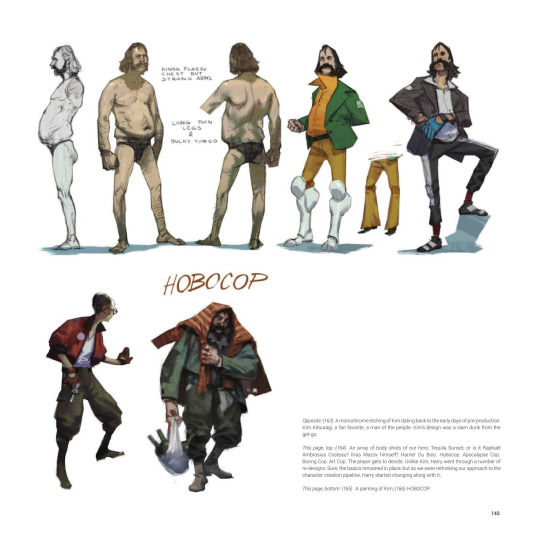


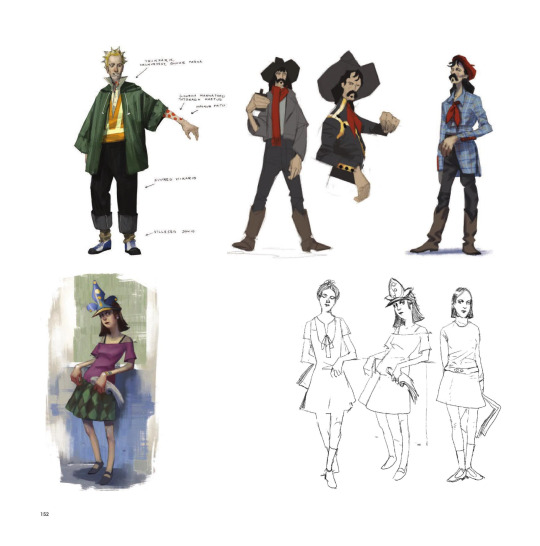
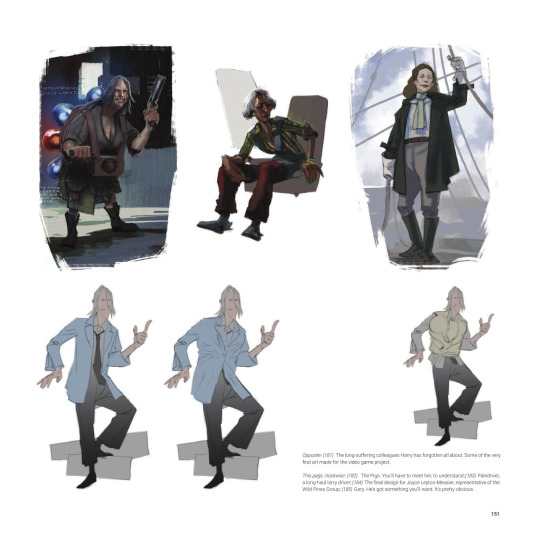

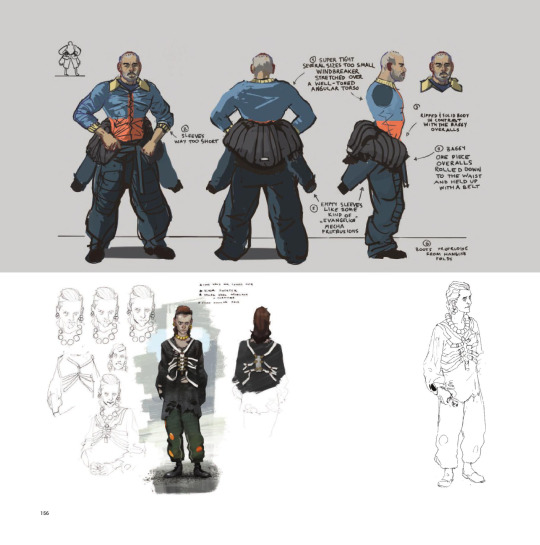



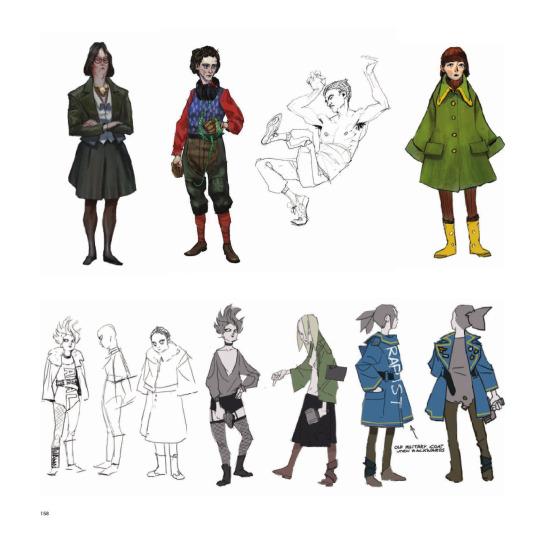
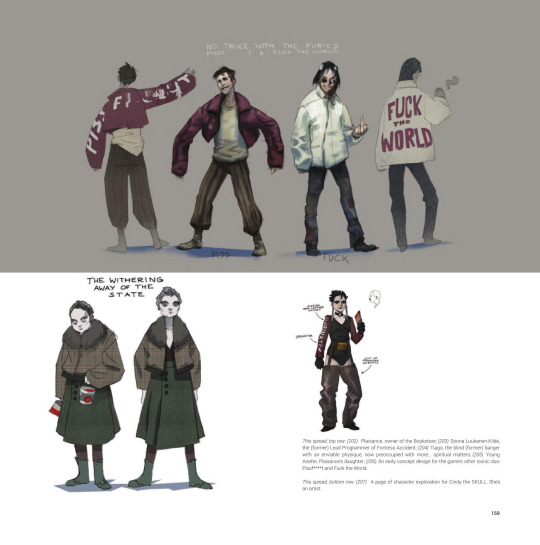

(pretty much) all the character concept arts from tha art book. because im the compiler
#theres a bunch of other harry outfit ones and general clothing musings but this is purely guys.#i like seeing how much a design has changed over the course of its creation idkkkk maybe someone else does too#im weirdly obsessed with how much thought went into measurehead theres a whole chapter on his development#disco elysium
2K notes
·
View notes
